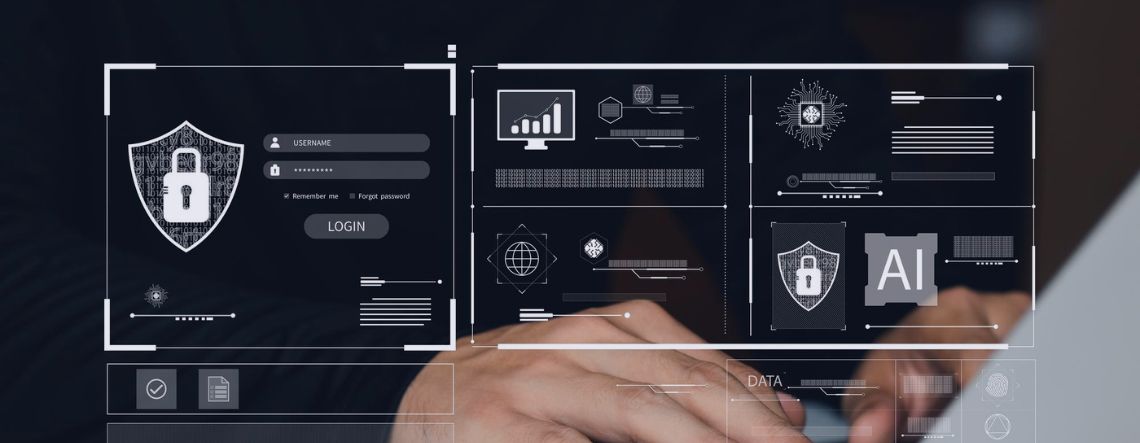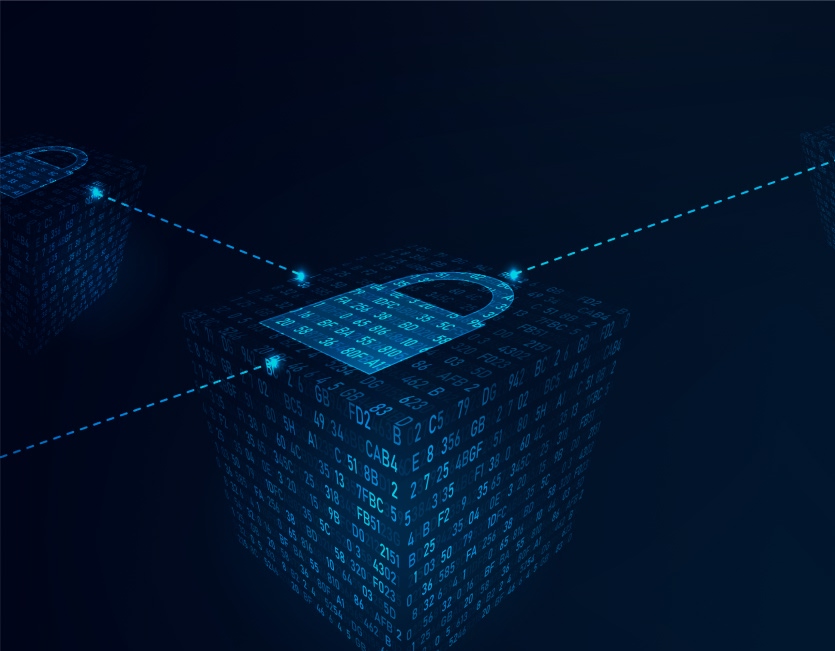Tackling Cybersecurity in the Legal World – Advanced Cybersecurity Solutions (Part 3)
-

Amal Purakkal
-
-
Jan 27, 2025
-
12 min Read
-

As judicial institutions embrace technology, they open doors to innovation but also vulnerabilities. These series of articles delve into the rising threats of cyberattacks on the legal sector, the profound consequences of breaches, and the comprehensive strategies necessary to build resilient defences and safeguard justice in the digital age.
Introduction
As legal institutions increasingly adopt digital systems to manage sensitive data, the need for robust cybersecurity has never been greater. With public trust and judicial integrity at stake, these organisations must proactively address evolving cyber threats to safeguard their operations and clients.
As the third and final instalment to the series on cybersecurity in the legal world, here, this article explores actionable strategies to enhance cybersecurity in the legal sector. From foundational best practices like employee training and data encryption to advanced technologies such as AI-driven threat detection and blockchain solutions, these measures are designed to safeguard sensitive information and ensure resilience against ever-evolving threats. Understanding the balanced approach that combines innovation with vigilance seems to be the right path to a secure and trusted legal ecosystem. And it is as good a place as any to start.
Read the previous articles in the series here.
Tackling Cybersecurity in the Legal World – Common Cyber Attacks (Part 1)
Tackling Cybersecurity in the Legal World – Consequences of Cyber Attacks (Part 2)
Comprehensive Cybersecurity Strategies for Legal Institutions
Law firms deal with private info, people’s trust, and court honesty, so they need strong online protection. They must mix foundational practices with new tech to fight ever-changing web-based risks and make an all-around protection plan. This not only keeps the firm safe but also follows rules and makes clients feel secure.
Strengthening the Cybersecurity Foundation
Building a resilient cybersecurity framework begins with implementing fundamental best practices. These measures form the bedrock upon which advanced technologies can effectively operate:
1. Employee Awareness and Training
Most cybersecurity problems come from human mistakes. We need consistent schooling to teach workers about the dangers of phishing, creating tougher passwords, and following rules for data safety. Fake phishing tests and hands-on seminars can help hammer home these points.
2. Access Control and User Privileges
Setting up role-based access helps workers see only the info they need. Multi-factor authentication (MFA) strengthens security. It demands two or more checks to use systems.
3. Regular System Updates and Patch Management
Cybercriminals tend to use weak spots in old software. Keeping systems updated with the most recent safety updates shuts the doors hackers might use to get in.
4. Data Encryption
Keeping data secure, both when it is stored and when it is moving, stops unwanted breaches. If the data ever gets snagged, being encrypted guarantees it stays scrambled without the right key to decode it.
5. Incident Response Plan
An easy-to-follow emergency action plan allows organisations to react quickly and properly if there is a security break. This plan needs to clarify jobs, chart rules, and steps for bouncing back, and to avoid too much interruption in operations.
6. Regular Security Audits
Regular checks by computer security pros can spot weak links before they are taken advantage of. Penetration tests and vulnerability scans make sure cyber defences stay strong against changing threats.
Integrating Advanced Technologies for Enhanced Protection
While foundational practices establish a strong baseline, leveraging advanced technologies elevates cybersecurity efforts to combat sophisticated threats:
1. Blockchain for Data Integrity and Transparency
Blockchain technology offers unparalleled data security by storing information in an immutable ledger. For legal institutions, this ensures the authenticity and integrity of critical documents, such as contracts, evidence, and case records. Blockchain’s decentralised nature also reduces the risk of single-point failures, making it highly resilient against cyberattacks.
2. Biometric Authentication for Enhanced Access Control
Things like scanning your fingerprint, face or iris recognition can offer safe and easy ways to prove it is really you. Unlike passwords, no one can guess or steal biological data outside of Mission Impossible movies. So, with biometric authentication you can rest assured that your important systems and files are safe and protected, ready for access only when you need them.
3. Artificial Intelligence (AI) for Threat Detection
Security tools powered by AI can sift through heaps of data instantly. This ability allows them to spot deviations and forecast dangers. They can change and adapt using machine learning, spotting new ways of potential attacks. This is how they actively shield against threats that we never see coming.
4. Zero Trust Architecture
In a zero-trust method, no user or gadget gets an automatic trust pass, not even from the institution’s own network. Each access attempt is meticulously checked. This cuts down on the chances of activities that are not allowed.
5. Cloud Security Solutions
Cloud systems with top-notch security tools offer stronger protection for data. Handy features such as automatically saved copies, version control, code scrambling, and live checks keep the data safe in the cloud.
6. Secure Communication Tools
Courts and other legal bodies frequently share critical details using e-mail or video calls. Tools with end-to-end encryption guarantee that only the right people have access to this data.
How Justice Accelerator Can Help
Advanced technologies enhance cybersecurity by enabling precise, adaptive threat detection and response. Tools like Justice Accelerator, which incorporates the latest in advanced technologies, including the above-mentioned points, to secure its platforms, exemplify how innovation can seamlessly strengthen protection while maintaining operational efficiency. Through custom solutions that pair advanced tech with a deep knowledge of legal requirements, JA’s pioneering methods help courts and legal institutions not only withstand online dangers but thrive and succeed in today’s digitised world, confidently, while upholding the judicial principles we hold dear in democratic societies.
The Role of Collaborative Efforts in Enhancing Cybersecurity
No single entity can combat cyber threats alone. Collective action is vital, as the dynamic and borderless nature of cybercrime demands a unified response. Legal institutions must actively collaborate with cybersecurity experts, industry peers, and governmental bodies.
- Intelligence Sharing: Sharing insights about emerging threats within the legal community helps institutions stay ahead of cybercriminals.
- Public-Private Partnerships: Collaboration with cybersecurity firms and government bodies can provide access to cutting-edge resources and expertise.
- International Cooperation: Cyber threats often transcend borders, necessitating a global approach to enforcement and prevention.
Conclusion
Securing judicial institutions requires a balanced approach that goes beyond integrating advanced technologies. While investing in innovative tools and systems is critical, equal emphasis must be placed on strengthening cybersecurity frameworks. This includes fostering a culture of vigilance, enhancing digital literacy, and ensuring robust security measures are in place to protect sensitive judicial data. By coupling technological advancements with comprehensive cybersecurity strategies, judicial institutions can safeguard their operations, maintain public trust, and adapt to the ever-evolving digital landscape. A holistic commitment to both technology and security is not just an investment in infrastructure but a vital step toward justice in the digital era.
-
Topics:
-

-
Amal Purakkal
Amal is a young and upcoming content writer who is passionate about exploring the latest innovations and trends in technology. With a focus on breaking down complex ideas, and at the same time, building narratives that shape crucial discourses, Amal highlights the transformative impact of emerging technologies on society, industries, and all our lives in general.



 +971 50 9295048
+971 50 9295048  +91 9746059514
+91 9746059514